Adult Congenital Heart Disease Comes of Age
It is expected that by the year 2020 more adults than children will need open-heart procedures to correct congenital heart defects. At NewYork-Presbyterian Hospital, cardiologists, interventional cardiologists, cardiac surgeons, and cardiac imaging specialists have come together to establish major programs in adult congenital heart disease with a focus on transitioning children seamlessly to adult care; providing the specific medical and surgical expertise needed to care for adults who have been living with heart disease since birth; and growing a new field to ensure that this population is treated by highly trained heart specialists who understand the unique aspects of adult congenital heart disease.

Dr. Emile A. Bacha
Adult aged patients with congenital heart disease make up a highly varied, extremely complex, and rapidly growing population. Prior to the development of novel surgical interventions in the 1960s, ‘70s, and ‘80s, many of these patients did not survive through infancy. Today, the number of adult congenital heart disease patients exceeds the number of pediatric aged patients with congenital heart disease, and continues to grow.
Each year, pediatric cardiac surgeons at the Congenital Heart Center of NewYork-Presbyterian Hospital, under the direction of Emile A. Bacha, MD, Chief, Division of Cardiac, Thoracic, and Vascular Surgery at NewYork-Presbyterian/Columbia, and Director, Congenital and Pediatric Cardiac Surgery at NewYork-Presbyterian, perform more than 700 cardiac operations, including some 25 heart transplants, 175 newborn heart repairs, and 100 adult congenital heart repairs.
The Congenital Heart Center is one of the first pediatric cardiology and cardiac surgery centers in the country, and one of the nation’s major pediatric transplant centers, having performed a high volume of pediatric heart surgeries since the early 1970s. Today the Center has a roster of highly skilled and experienced cardiovascular surgeons, including national leaders specializing in complex neonatal surgery, hybrid minimally invasive surgery, and transplant/assist devices. In particular, Dr. Bacha cites close collaboration with cardiology colleagues as integral to caring for both pediatric and adult patients with congenital heart disease.
“Our survival rates for children with CHD are about 98 percent,” says Dr. Bacha, who is known for developing novel techniques to perform hybrid surgical-interventional catheter-based procedures for many complex congenital heart defects, including hypoplastic left heart syndrome. “Patients are now thriving and growing to adulthood.”
Adult congenital heart disease patients continue to need advanced care throughout the course of their lives, including imaging studies of their complex anatomy, catheter-based interventions for amelioration of residual defects and rhythm disturbances, additional surgery for repair or replacement of valves that may no longer be functioning normally, repair of residual holes in the heart, or replacement of artificial blood vessels implanted decades earlier that may become obstructed.
“Adult congenital heart disease patients are very complicated,” says Dr. Bacha. “They’ve often had two, three, and four surgeries in the past – sometimes five and six. Ten years ago nobody would touch these patients. We’re benefitting now from advances in ventricle assist devices, heart transplant, intraoperative care, and ICU postoperative care. Better ways of managing patients in surgery allow us to operate on highly complex, highly difficult cases with a good success rate.”
Adult Centers Focused on CHD
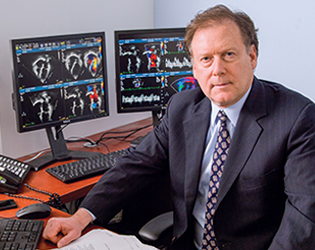
Dr. Marlon S. Rosenbaum
“There are about 35 or more abnormalities of the heart that can occur during fetal development,” says Marlon S. Rosenbaum, MD, Director of the Schneeweiss Adult Congenital Heart Center at NewYork-Presbyterian/Columbia, who came to Columbia in 1987 to create one of the first adult congenital heart disease programs in the country. “Every congenital heart disease patient is different,” says Dr. Rosenbaum. “For example, someone born in the 1970s with the aorta and pulmonary artery attached to the wrong chambers would have had a baffle constructed within the upper chamber of the heart, which creates its own problems later in adulthood. Someone with the same anatomy born in 1990 would have had the two arteries returned to the appropriate chambers, a procedure that creates an entirely different set of potential issues.”
The Schneeweiss Adult Congenital Heart Disease Center recently recruited Matthew J. Lewis, MD, to join Dr. Rosenbaum and Jonathan N. Ginns, MD, in providing state-of-the-art care for these patients. Dr. Lewis serves as Director of Adult Congenital Heart Disease Research. Current research projects underway at the Schneeweiss Center include a multicenter study of adults with a failing Fontan repair for which Columbia faculty are the lead investigators; a multicenter study involving patients with a systemic right ventricle; and studies on the effect of pacing on Fontan outcome, outcome of patients who underwent pulmonary stenosis repair, and outcome of catheter ablation in patients with adult congenital heart disease.

Dr. Harsimran S. Singh
The Cornell Center for Adult Congenital Heart Disease directed by Harsimran S. Singh, MD, is a collective effort among adult and pediatric specialists, offering a comprehensive approach that includes imaging experts, cardiologists, interventional cardiologists, and cardiac surgeons. “We follow adult patients with a wide spectrum of congenital heart problems,” says Dr. Singh. “These include cardiac defects often first discovered in adulthood, such as atrial septal defects and bicuspid aortic valve disease. We also see more complex birth anomalies that may have already required multiple surgeries in childhood, such as tetralogy of Fallot, transposition of the great arteries, coarctation of the aorta, and single ventricle anatomy or Fontan circulation.” Also, in conjunction with Evelyn M. Horn, MD, Director, Perkin Heart Failure Center, and her pulmonary hypertension team, the Cornell Center follows a large group of congenital heart patients with pulmonary hypertension and Eisenmenger’s physiology.
Surgery Across the Lifespan
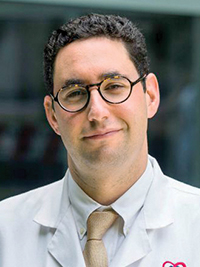
Dr. David M. Kalfa
“Congenital heart disease accounts for almost 1 percent of all malformations in babies,” notes David M. Kalfa, MD, PhD, a pediatric cardiac surgeon at NewYork-Presbyterian/Columbia. “In recent years we have had major successes in the surgical, medical, and ICU treatments of these children, and their survival has increased impressively. Now as adults, however, many require reoperations.”
As one example, Dr. Kalfa points to replacement valves and other devices that lack growth potential. “As the baby grows, the tube or valve does not, which results in a reoperation as these patients get older,” says Dr. Kalfa. “Each time it is open-heart surgery, and each time there is significant risk of complications and mortality. If you can implant a device that could grow with a child, you avoid at least two surgeries.”
Dr. Kalfa serves as the principal investigator of a multicenter research consortium that is currently developing an innovative biofunctionalized and bioresorbable polymeric valved tube. “Our aim is to achieve biodegradation of the polymer that would be replaced by new, living tissue, which would be autonomous – it would belong to the patient and would last their lifetime.”
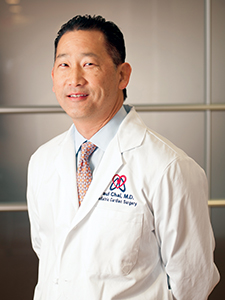
Dr. Paul J. Chai
Certain congenital heart defects, such as hypoplastic left heart syndrome, require multiple surgeries in children to correct a number of heart structures that do not fully develop. “We have to redirect the flow of the blood so that the right ventricle is doing the work of both the pulmonary circulation and the systemic circulation,” says Paul J. Chai, MD, Director of Pediatric Heart Transplantation and Mechanical Assist Device Services, and Director of Congenital Heart Surgery at NewYork-Presbyterian/Weill Cornell. “The Norwood procedure is a three-stage heart surgery in which we create a ‘new’ aorta and connect it to the right ventricle and also place a tube from either the aorta or the right ventricle to the vessels supplying the lungs. This is a complex operation and probably has one of the highest risks of mortality and morbidity. We have been particularly successful with this surgery. These outcomes reflect the skill of our medical and surgical teams, as well as the excellence of our postoperative care.”
Adults who have had surgery for hypoplastic left heart syndrome as children face an uncertain future, explains Dr. Chai. “We don’t know whether the right ventricle is going to do well,” he says. “Some of these patients can have very complex anatomy as adults. When they require further surgery, whether it is a corrective surgery, valve replacement, or a transplant, their physiology and anatomy are so complicated that they should be operated on by a pediatric and congenital cardiac surgeon.”
Adult survivors of CHD face a lifelong process of medical and surgical interventions. NewYork-Presbyterian physicians agree that there is a need for having a comprehensive and seamless infrastructure in place to care for this fast-growing and challenging population of adults.
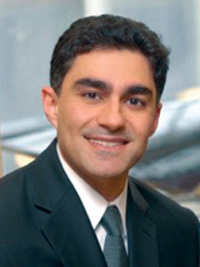
Dr. Arash Salemi
Furthermore, notes Dr. Chai, by the time the adult requires additional surgery, he or she has already undergone four or five cardiac surgeries, creating scar tissue that also presents complications. “You have to be very versatile in pediatric congenital heart surgery to be able to deal with all of these different types of patients as adults with their unique anatomy and physiology,” he says.
“Congenital bicuspid disease is a condition that we see frequently because these valves are prone to early deterioration,” says Arash Salemi, MD, Surgical Director, William Acquavella Heart Valve Center at NewYork-Presbyterian/Weill Cornell. “Bicuspid valves create turbulent flow and because of that the wear on them is greater than with a normal tricuspid valve. These patients present with varying degrees of symptomatic aortic stenosis down the line. The vast majority are classified Sievers 1, which represents a partial raphe between two of the three native aortic valve cusps. Less common would be a complete fusion between two of the three cusps, and the least common form would be two cusps and no evidence of a third cusp whatsoever. Bicuspid valves generally fail earlier than their tricuspid counterparts, typically in middle-age.”
In addition to correcting these challenging conditions with standard open-heart surgery, Dr. Salemi and his colleagues are pursuing alternative technologies and techniques that include the PORTICO resheathable transcatheter aortic valve system. “As part of the PORTICO clinical trial, we are evaluating a transcatheter, self-expanding, nitinol-based valve,” says Dr. Salemi. “It is recapturable and repositionable and is used for patients with all forms of aortic stenosis, including patients who have some varying degrees of congenital malformations. The draw of this procedure is that it’s less invasive, catheter-based, and does not require a sternotomy or the need for the heart-lung machine.”
Role of Interventional Cardiology
While medical and surgical therapies for congenital heart disease have made significant strides in recent years, at the same time the field of interventional cardiology has also experienced rapid growth.
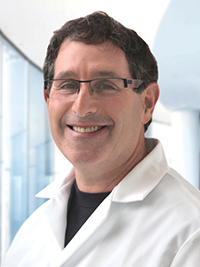
Dr. Robert J. Sommer
Robert J. Sommer, MD, Director of Invasive Adult Congenital Heart Disease at NewYork-Presbyterian/ Columbia, is a pediatric cardiologist who began his medical career taking care of children. Over the last 15 years, Dr. Sommer found himself transitioning to adult cardiology specifically for the management of the congenital heart disease population of patients. “Interventions have become available for closing holes, opening up valves, and fixing obstructions in large blood vessels that were congenitally malformed,” says Dr. Sommer.
A major focus of Dr. Sommer’s expertise is treating patients who have patent foramen ovale (PFO), which has been associated with various disease processes. These include paradoxical emboli causing cryptogenic strokes or other systemic arterial occlusion events, systemic hypoxemia from right-to-left shunt, decompression sickness in divers, and migraine headaches. The presenting symptom is a neurological event, either stroke or transient ischemic attack.
“PFO is a critical component of the fetal circulation,” explains Dr. Sommer. “In most babies, this flap in the heart wall closes after birth. However, there is incomplete closure in about 25 percent of babies. The vast majority of these patients will grow up and never find out that they have a PFO. But in rare cases, these patients may present with a stroke if a clot crosses from the right side of the heart to the left side, through the PFO, and reaches the brain. Additionally, there’s a significant percentage of patients with PFOs who have migraine headaches.”
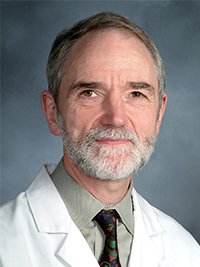
Dr. Geoffrey W. Bergman
At NewYork-Presbyterian/Weill Cornell, both Dr. Singh and Geoffrey W. Bergman, MB, BS, perform structural interventions for adults with uncorrected congenital heart defects, including PFO and atrial septal defects. The main population of patients considered for PFO closure is those with cryptogenic stroke, particularly younger patients. “Potential candidates range from teenage years up to about 60,” says Dr. Bergman. “Beyond age 60, more common causes of stroke become more predominant. However, if the workup for stroke results in no other obvious cause, then PFO must be considered.”
According to Drs. Singh and Bergman, a small percentage of patients may suffer the effect of shunting of deoxygenated blood through the PFO causing low oxygen levels in the arterial blood. “There are patients in whom changes in heart chamber stiffness, pressure, or flow patterns can allow ‘blue’ or deoxygenated blood to shunt across a PFO leading to reductions in oxygen desaturation,” states Dr. Singh. “One extreme, albeit rare, example of this phenomena is platypnea-orthodeoxia syndrome.”
“This causes patients to become severely desaturated when they stand up,” adds Dr. Bergman. “This is very limiting for patients physically and for them closure of PFO is a curative procedure.”
Every patient who is a candidate for PFO closure is assessed carefully with multiple diagnostic modalities to ensure that they do not have other cardiac or vascular defects that could give rise to stroke. “They need to be evaluated for rhythm disorders, coagulation abnormalities, other structural and vascular defects, and so on,” says Dr. Bergman. “We must be sure that they are truly cryptogenic and that there are no contraindications to putting a device into the patient.”
“Over the past 15 or so years, PFO closure has been clinically performed using off-label devices approved for atrial septal defects,” states Dr. Singh. “However, as of October 2016, the FDA has approved the AmplatzerTM PFO Occluder as the first device in the U.S. officially indicated for PFO closure in cryptogenic stroke.” One pivotal study that led to this approval was the long-term data from the RESPECT trial, which shows “a 45 percent relative risk reduction of recurrent ischemic stroke with device closure compared to medical therapy alone.”
Dr. Rosenbaum and Dr. Singh note the importance of having an infrastructure in place to care for congenital heart disease patients in adulthood. “For adult patients with complex congenital heart disease, adult and pediatric cardiac specialists work together to streamline the process of transition from pediatric to adult care,” says Dr. Singh. “The idea is to empower patients to achieve knowledge about their medical diagnosis and independence in their self-care. It is important for patients to understand that their pediatric doctor is not abandoning them, but rather is working together with the adult specialist as the spectrum of medical disease shifts with age. Even when they are 30 years old, there will be times when the pediatric cardiologist should be involved in clinical decision making.”
“You cannot practice adult congenital heart disease in a vacuum,” says Dr. Rosenbaum. “Patients are referred from other medical centers with multiple abnormalities that require correction. There are very few centers in the United States that can offer the level of multidisciplinary expertise in adult congenital heart disease that can be found at NewYork-Presbyterian.”
NewYork-Presbyterian
Advances in Cardiology
Read more about our latest clinical advances.



